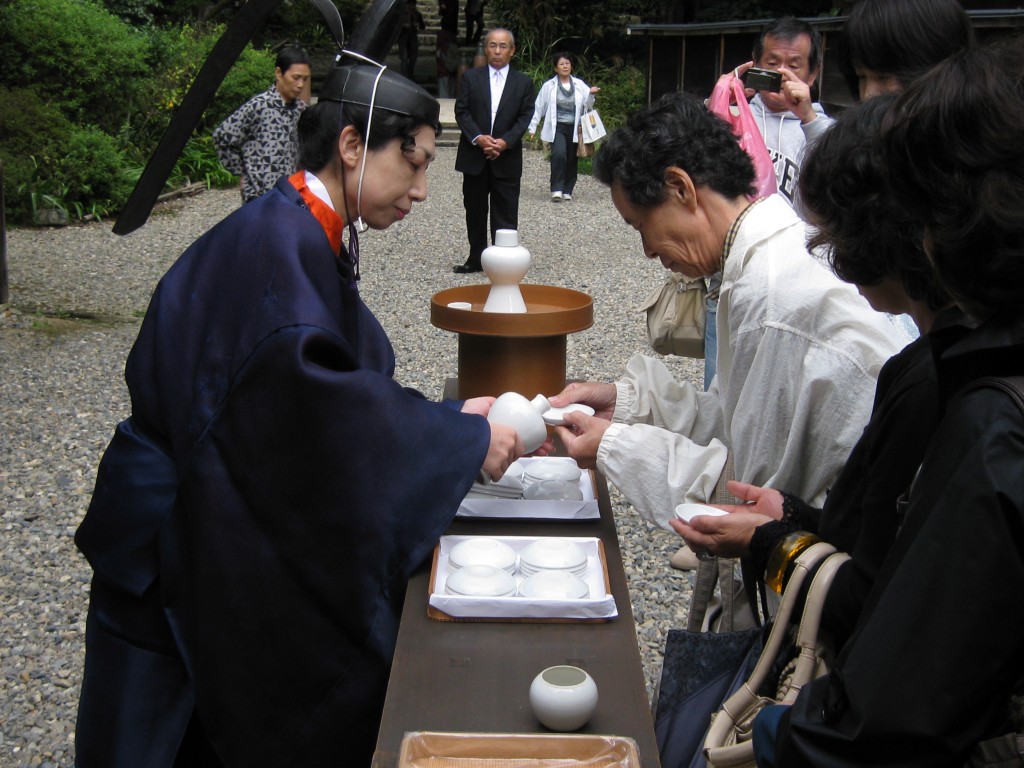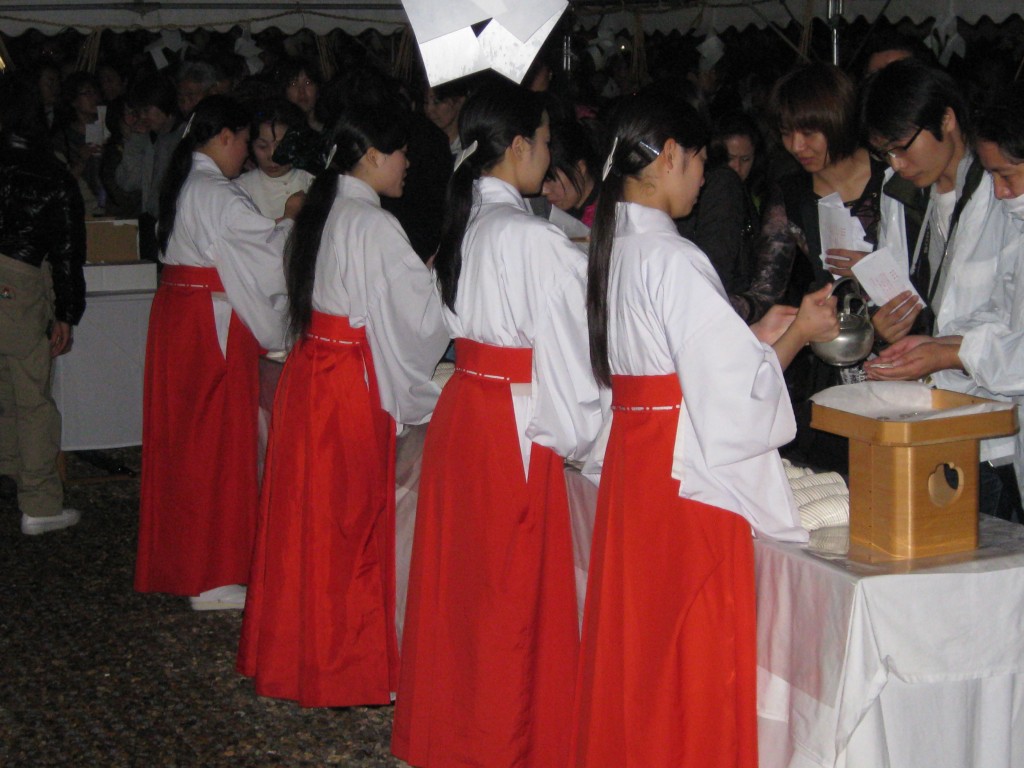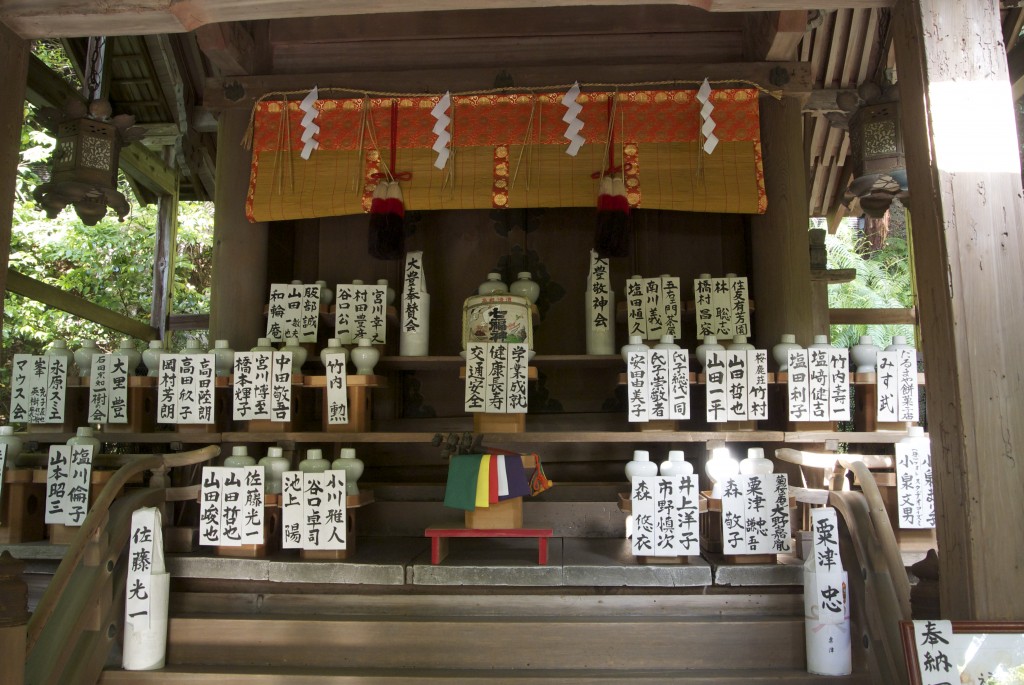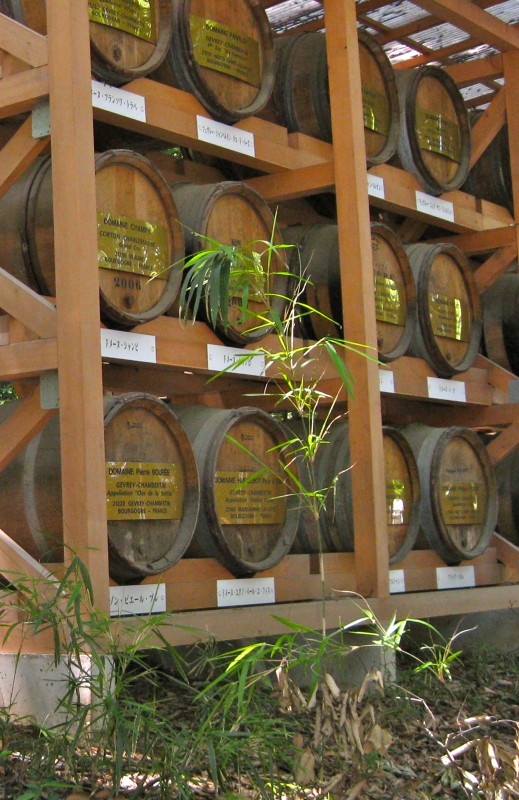An article in the Japan Times went into such depth in its research into Shinto’s saké connections that one could say they got to the very bottom of the barrel. An interesting place to be. Take a read for yourself…
*************

When displayed near a Shinto shrine, barrels [of sake] are called kazaridaru, which means “decoration barrels.” As [can be] surmised, the barrels on display are empty, at least in physical terms. Spiritually, they’re chock full of significance.
“In Japan, sake has always been a way of bringing our gods and people together,” Tetsuo Hasuo of the Japan Sake Brewers Association explained when I brought the question to him. “In some of this country’s oldest texts the word used for sake is miki, written with the characters for ‘god’ and ‘wine.’ People would go a shrine festival and be given rice wine to drink, and they would feel happy and closer to the gods.”

These days, the word miki (or o-miki when given its honorific prefix) is reserved for rice wine used in Shinto rites and festivals. Sipping a cup is still a prayerful act of symbolic unification with the gods. Shinto shrines and sake manufacturers maintain a symbiotic relationship, in which the shrines conduct rites to ask the gods for the prosperity of the brewers, and — this is where the barrels come in — the brewers donate the grog that shrines need for ceremonies and festivals. There is no particular season for donations, according to Hasuo.
“Shrines need more sake when they have festivals, the timing of which varies by shrine,” he said. “But festivals are most often held in the spring and fall, so those are the busiest season for donations.”
Smaller shrines usually get their o-miki from local sake companies, but two shrines, Meiji Jingu in Tokyo and Ise Jingu in Mie Prefecture, look after the entire national product by accepting donations from every rice-wine brewer in the country.
Given that there are about 1,800 sake manufacturers in Japan, that’s quite an undertaking. The logistics are handled by a special committee at each shrine called the shuzokeishinkai (brewer reverence committee), which works out who sends what.

When it comes to barrels, the committee will ask for only as many full ones as the shrine actually needs for festivals and ceremonies.
“Generally, a brewer provides just one bottle, or an empty barrel for display. It’s the kimochi (gesture) that’s important,” Hasuo said, “because asking for or giving more sake than is actually needed would be mottainai (wasteful).”
This strikes me as an example of traditional Japanese values: Shinto gods don’t make unreasonable demands of people, and people show respect for the natural world inhabited by Shinto gods by avoiding waste.
At many shrines, including Meiji Jingu, empty barrels received as donations are stacked and bound together, then fixed with rope to a simple frame to keep them from falling over.
Other shrines, including the Hachiman Shrine in Kamakura, have a permanent wooden structure that looks like a gigantic bookcase on which the barrels are neatly shelved. Smaller shrines line up their casks on a dais or simply display them wherever it’s convenient.
A few shrines don’t have to rely on donations to get their o-miki because they brew their own. The number of shrines doing so, however, is extremely limited. Rice-wine production has been regulated in Japan since the eighth century and even shrines making sake for onsite consumption are required to have a government license. This is true for individuals too, which is why you don’t hear about home sake brewing as a hobby in Japan.

In any case, there are only four shrines in all of Japan licensed to make sake. One of them, Okazaki Hachiman Shrine in Yamaguchi Prefecture, makes an unusual white sake called shiroki that can be sampled during the shrine’s fall festival, held on the third Saturday in October. Another 40 shrines are licensed to make an unrefined rice wine called doburoku, also served at festivals.
Rice wine is not normally stored in barrels because it picks up too much of the taste and smell of the wood. But a short stay gives the sake a pleasant woody aroma, so upon request brewers fill barrels (from a steel tank) a few days in advance of festivals and other special occasions.
You don’t have to be connected with a shrine to get your hands on one of those sake barrels, which are called komodaru. (Komo is the woven straw wrapped around the staves.) You can buy an empty barrel if you really want to, or you can order a full one for a wedding or party. A standard komodaru holds four to (an old measure), or 72 liters, and will set you back about ¥100,000. If that’s too much sake for your party but you still want the impact of a big barrel, you can request an agezoku (false bottom) that reduces the fill to as little as one to (18 liters).
It’s a custom at New Year’s parties, weddings and consecrations of new buildings to break open a barrel of sake in a ceremony called kagamibiraki. Kagami usually means “mirror,” but in this case it refers to the wooden lid on the top of the barrel. A favored few are armed with wooden mallets, and after appropriate wishes for health, happiness and prosperity, the hammer holders give a cry and smash open the top of the barrel. Cups of the sake are distributed to all and a toast is made.

